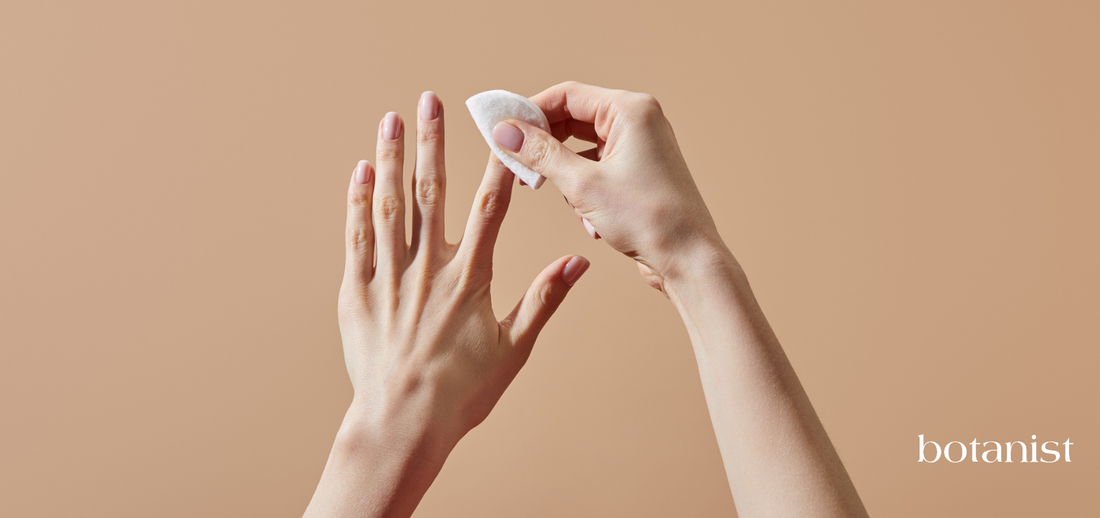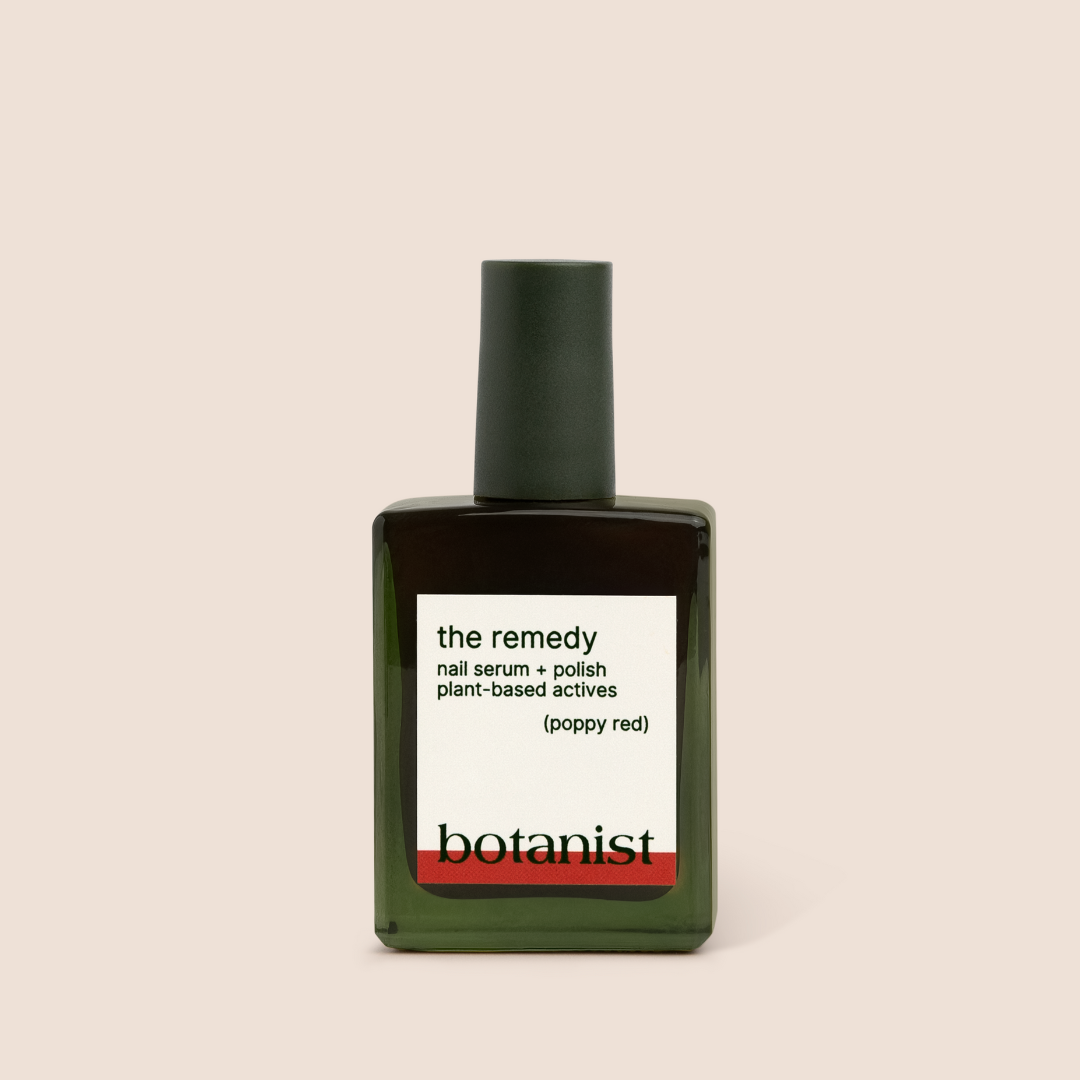How to Remove Nail Polish Without Damaging Your Nails
Tess Miller
Summary
- Learn how to remove nail polish without weakening or damaging your nails.
- Discover safe techniques and dermatologist-backed tips for healthy nail care.
- Find product recommendations and expert advice for nourished, polished nails.
We’ve all been there struggling to peel off stubborn nail polish with our fingers or reaching for the strongest acetone remover we can find. But removing polish the wrong way can seriously weaken your nails over time. Whether you change your manicure weekly or just clean up occasionally, knowing how to remove nail polish safely is key to keeping your nails strong, smooth, and free from damage.
This guide covers the best techniques, essential tools, and science-backed tips to help you remove polish the right way without harming your natural nails.

Why Nail Health Matters
Healthy nails aren’t just about appearance they reflect your overall well-being. Made of keratin (the same protein found in skin and hair), nails can become dry, brittle, and prone to splitting when exposed to harsh chemicals.
According to this study, frequent use of acetone and other strong solvents can dehydrate the nail plate, leading to breakage and peeling. Over time, this can cause chronic dryness and even changes in nail texture.

The Right Way to Remove Nail Polish
Technique and product choice make all the difference. Follow these steps for safe, effective polish removal:
1. Gather your supplies
- Non-acetone nail polish remover
- Cotton balls or pads
- Aluminum foil (optional)
- Cuticle oil or hydrating hand cream
- Nail file and buffer
2. Choose the right remover
Opt for a non-acetone formula when possible. While acetone works quickly, it strips nails of natural oils. Non-acetone removers use gentler solvents like ethyl acetate or isopropyl alcohol. For a nourishing option, try the nail polish remover from Botanist Nails, designed to remove polish while keeping nails healthy.
3. Soak and press
Soak a cotton ball in the remover, place it on the nail, and wrap it in foil (or press firmly) for 2–3 minutes. This helps dissolve polish without excessive rubbing.
4. Wipe gently
After letting it sit, wipe the polish off in one smooth motion. Avoid scrubbing, which can scratch the nail surface.
5. Moisturize immediately
Apply cuticle oil or a rich hand cream right after removal to restore moisture. For a full recovery routine, check out the nail rescue kit rose, which includes everything your nails need to recover.
For more tips on repairing nails after long-term polish use, read this guide on How to Recover from Nail Damage After Acrylics or Gels.
Alternatives to Traditional Removers
If you prefer gentler methods, these natural alternatives can work for light polish layers:
DIY Methods for Light Polish
1. Vinegar and Lemon Juice Mix
Combine equal parts vinegar and lemon juice, soak nails for 10–15 minutes, then gently wipe off polish. This mild acid blend works for thin layers but won’t remove gel or glitter polish.
2. Rubbing Alcohol or Hand Sanitizer
These can dissolve light polish in a pinch, but they’re drying. Always follow up with heavy moisturizer.
3. Peeling Polish Base Coats
Some polishes are designed to peel off easily, reducing the need for harsh removers. A great option for frequent polish wearers.
According to this study, frequent exposure to acetone-based removers can weaken nails over time, making these gentler alternatives a safer choice.
If you struggle with dry skin around your nails, check out these simple fixes that work.
What to Avoid When Removing Nail Polish
Even small mistakes can damage nails. Steer clear of these habits:
- Picking or scraping off polish
- Using pure acetone too often
- Over-buffing nails
- Skipping post-removal moisturizing
- Leaving polish on for weeks
The nail bed is delicate, and repeated trauma can lead to ridges, discoloration, or long-term weakening. A research review notes that damage to the nail matrix can cause lasting changes in nail structure.
For more nail care tips, read Nail Care 101: The Complete Guide to Strong and Healthy Nails.
Complete Manicure Kit Nude — Everything you need for salon-quality nails at home, including tools and polish in a timeless nude shade.

Aftercare for Healthy Nails
Once polish is off, pamper your nails with these simple steps:
Hydrate and Strengthen
- Cuticle Oil: Look for jojoba oil or vitamin E to nourish nails.
- Hand Cream: Apply daily, especially after washing hands.
- Biotin Supplements: Can help strengthen nails (consult your doctor first).
- Nail Strengtheners: Choose formaldehyde-free formulas.
Give Your Nails a Break
Go polish-free for a few days between manicures. This helps nails recover moisture and flexibility.
For more on why breaks matter, check out 5 Reasons You Should Take a Break from the Salon.
Shiny Top Coat — Lock in your manicure with this ultra-glossy top coat that protects and extends polish wear.
FAQ: Nail Polish Removal
1. Is acetone really that bad for your nails?
Acetone is effective but drying. Use it sparingly and always moisturize afterward.
2. How often should I remove nail polish?
Limit polish to 7–10 days at a time, with breaks in between to prevent weakening.
3. Can I remove gel polish with non-acetone remover?
No gel requires acetone. Reduce damage by soaking nails and gently lifting polish instead of scraping.
4. Why are my nails yellow after removing polish?
Dark polishes can stain nails. Prevent this with a base coat or gently buff the surface.
5. What should I do if my nails feel weak after removal?
Take a polish break, use strengthening treatments, and apply cuticle oil daily. Consider biotin if needed.
With the right removal routine, you can enjoy polished nails without sacrificing their health. A little care goes a long way!
